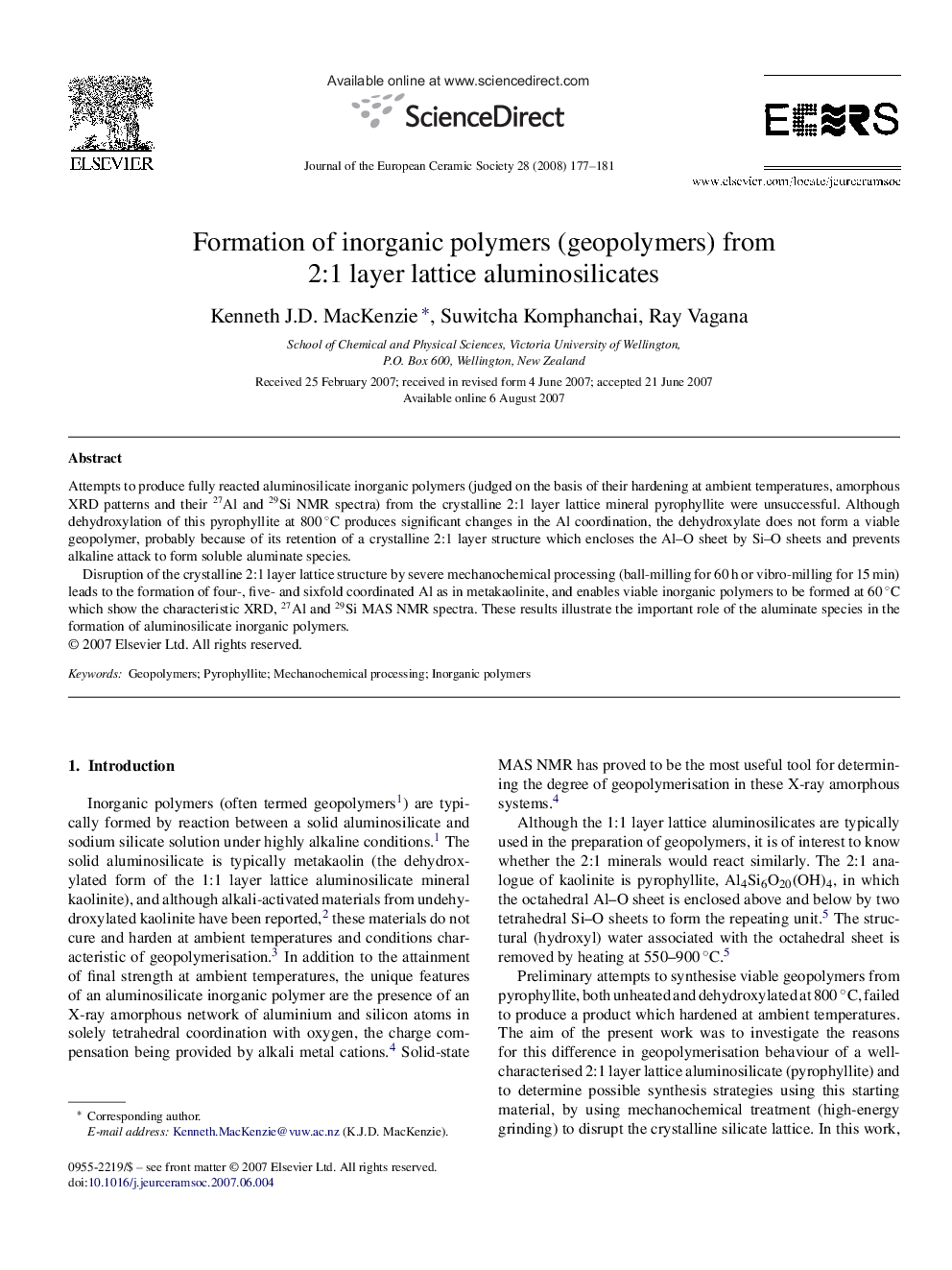| Article ID | Journal | Published Year | Pages | File Type |
|---|---|---|---|---|
| 1477575 | Journal of the European Ceramic Society | 2008 | 5 Pages |
Attempts to produce fully reacted aluminosilicate inorganic polymers (judged on the basis of their hardening at ambient temperatures, amorphous XRD patterns and their 27Al and 29Si NMR spectra) from the crystalline 2:1 layer lattice mineral pyrophyllite were unsuccessful. Although dehydroxylation of this pyrophyllite at 800 °C produces significant changes in the Al coordination, the dehydroxylate does not form a viable geopolymer, probably because of its retention of a crystalline 2:1 layer structure which encloses the Al–O sheet by Si–O sheets and prevents alkaline attack to form soluble aluminate species.Disruption of the crystalline 2:1 layer lattice structure by severe mechanochemical processing (ball-milling for 60 h or vibro-milling for 15 min) leads to the formation of four-, five- and sixfold coordinated Al as in metakaolinite, and enables viable inorganic polymers to be formed at 60 °C which show the characteristic XRD, 27Al and 29Si MAS NMR spectra. These results illustrate the important role of the aluminate species in the formation of aluminosilicate inorganic polymers.
